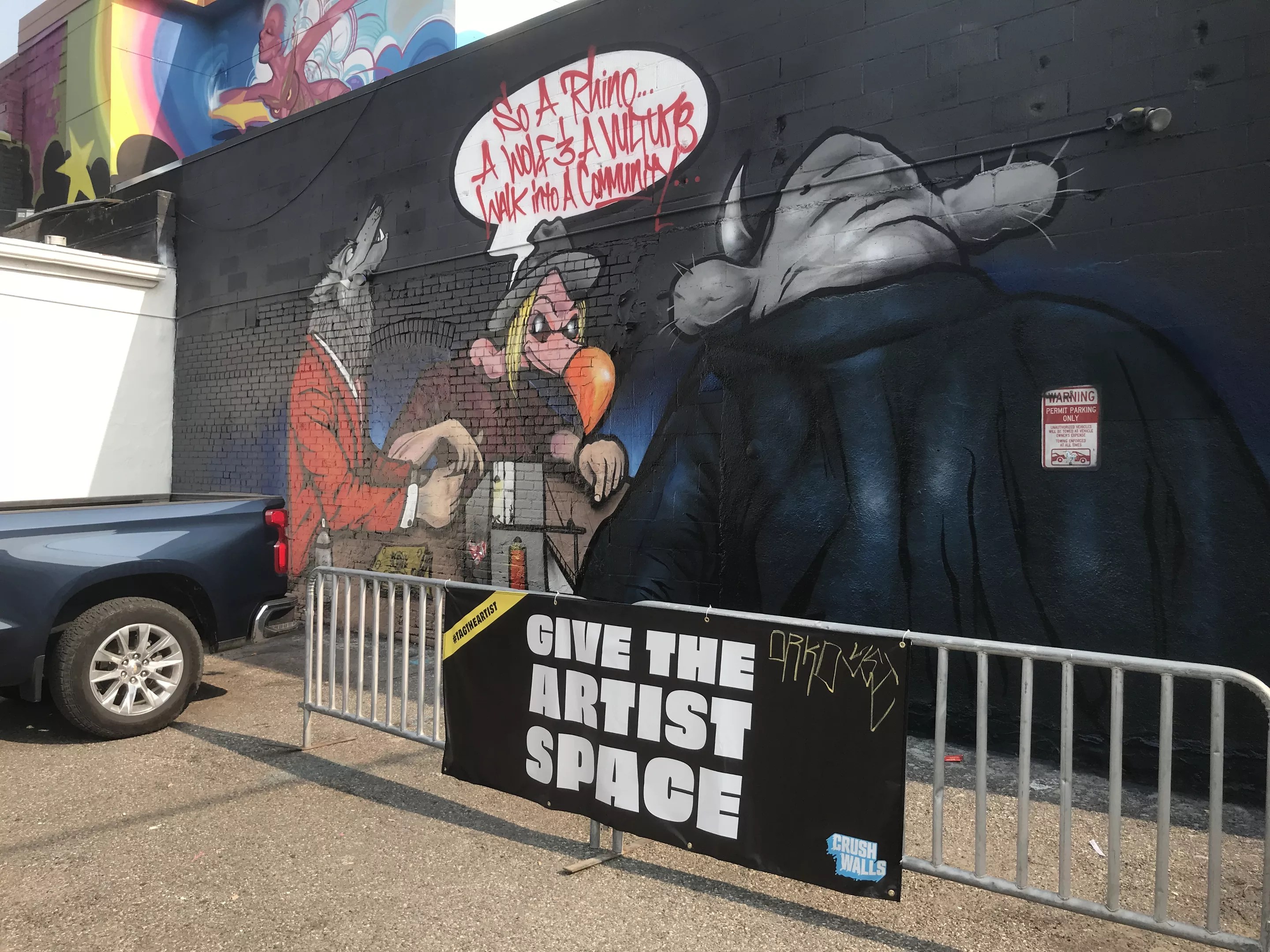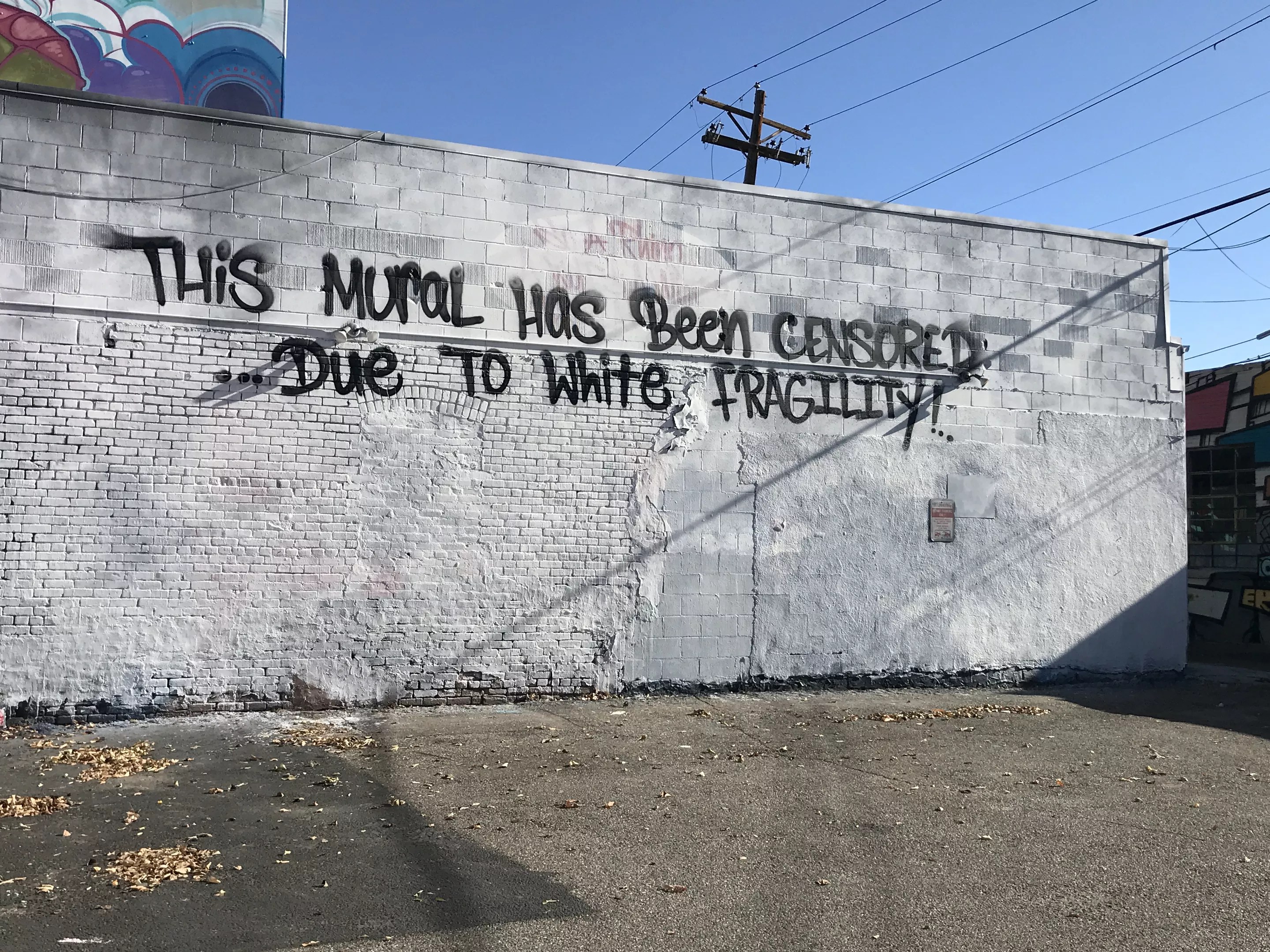
Kyle Harris

Audio By Carbonatix
Crush Walls prides itself on being a censorship-free mural festival willing to include art that slams the street-art scene, muralists and even the Crush event itself. Even so, Jolt’s 2020 painting on the American Bonded building that blasts the RiNo Art District, street artist Pat Milbery and developer Ken Wolf for their role in gentrification has been whitewashed under a thin layer of paint. Only traces of the word “Rhino” and shadows of the image remain.
“Personally, it looks as if it was done in a hurry,” says Jolt. “Whoever did it spilled paint all over the ground.”
Jolt’s original mural depicted a predatory wolf, a vulture – perhaps a culture vulture – wearing Milbery’s signature clothes, and a rhinoceros. The three looked like mobsters conspiring around a table. Underneath the vulture was a box with Milbery’s signature heart design that he uses in his well-funded and citywide Love This City project, along with a spray-paint can.
Now, atop the poorly painted white wall, text in Jolt’s signature script reads: “This mural has been censored…due to white fragility!”

Jolt’s Crush 2020 mural was painted over, and now this slogan appears on the white-washed wall of American Bonded.
Kyle Harris
Jolt says that he does not know who painted over his mural. A Crush Walls representative told him that the festival was not involved, and the building’s owner told him that he wasn’t sure what had happened – maybe it was painted for another mural festival?
But if that was the case, it doesn’t explain why Jolt’s mural was the only one to be covered. An adjacent piece by Alicia Cardenas is still up.
Jolt is no stranger to controversy at Crush. In 2019, he slammed white women in yoga pants, Kyle Zeppelin and the RiNo Art District in a different mural that mocked gentrification of the surrounding Five Points neighborhood.
He’s been an outspoken critic of white artists coming into the historically Black and Latino neighborhood and treating it as their own creative playground. He has blasted the RiNo Art District before on panels and in videos for art-washing economic violence.
Creating room for critical dialogue is part of what the festival is all about, says RiNo Art District head Tracy Weil, who paints and helps organize Crush. That includes commissioning pieces from artists like Jolt, who are not exactly friendly to the work the district is doing.
“He’s getting paid to express himself in a way that might not be read as positive for the art district,” Weil said before this year’s Crush got under way. “This creative freedom is the essence of what we are, and he’s in again this year.”
Though the festival is censorship-free, it also has artists paint the same walls over and over again, which means work is often erased annually. But to have something painted over just weeks after the festival ends is far from typical.
Weil did not respond to Westword‘s request for comment about the coverup.